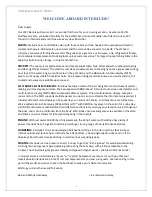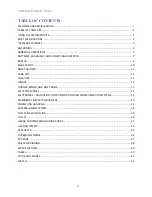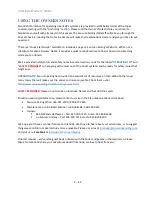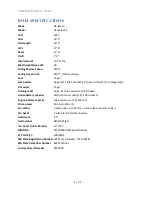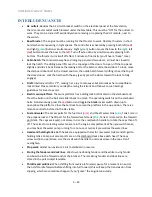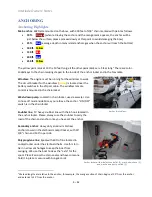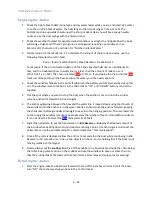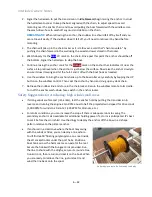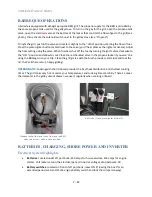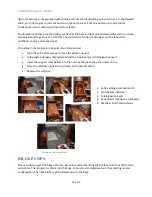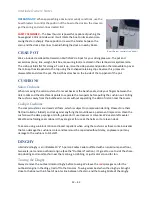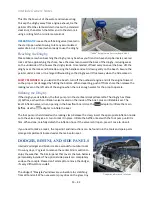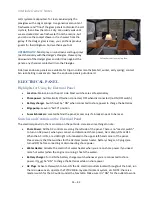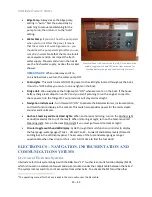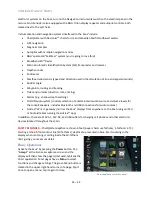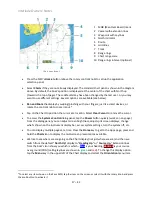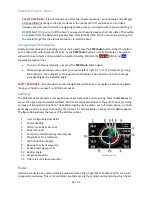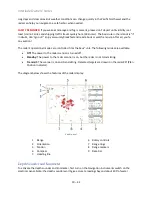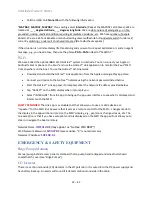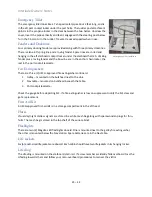
Interlude
Owners’ Notes
8
–
42
•
Charging
: Turn on Battery Charging switch on electrical panel whenever connected to shore
power to charge the batteries.
•
Shore power
: 50 ft. AC power cable (store in aft port locker under the helm when not in use);
blue LED will illuminate on the boat plug when connected to shore power; a 25 ft. extension
cord is also stored in the aft port locker.
•
Inverter
: ON/OFF switch located on electrical panel. Do not use appliances that draw lots of
power, like hair dryers.
Batteries
Interlude
’s battery system has
been upgraded to include five (5) high capacity AGM batteries, four (4)
for the house electronics (providing ~420 amp-hours) and one for starting the engine. The battery bank
and battery switches are in the aft port cabin, with the batteries located under the berth. Under normal
operations all battery switches should be
set to “ON.”
The voltage readouts for the batteries are on LCD readout on the electrical panel in the main cabin,
press the battery icon to toggle between Domestic and Engine battery levels. Note that
12.5 volts
at rest
(no load) is
fully charged
while
11.8 volts
is
empty
,
which is
not good
; don’t let the batteries fall below
12V without recharging. If the battery level drops to 12.1V, run the engine for about an hour at 1100
RPM to re-charge the batteries. We monitor the voltage readouts regularly when running on battery
power to e
nsure we don’t draw the batteries down too far, and we
always check them before turning in
at night. With proper power management, expect to use ~60-100 AH overnight
2
. The LCD panel provides
a readout of the current amperage draw. If the charge level drops to 12.1V
and you can’t recharge
, turn
off as many systems as possible, for example, the fridge (draws about 4 amps; it will keep food cold
overnight).
SAFETY REMINDER
–
Never turn off the batteries when the engine is running, as this will seriously
damage the electrical system. If you have small children on board, the nice big red & black switches can
look like something fun to play with.
Please make sure no one touches them while the engine is running
.
2
𝐼 =
𝑃
𝑉
where I is amperage, P is power (watts) and V is volts. For example, 100 AH over 12 hours is ~8 amp/hr; at
12.5 volts, this is producing ~100 W of power, which is quite a bit on a sailboat.
Battery bank
–
aft port cabin.
Battery switches
–
aft port cabin.


